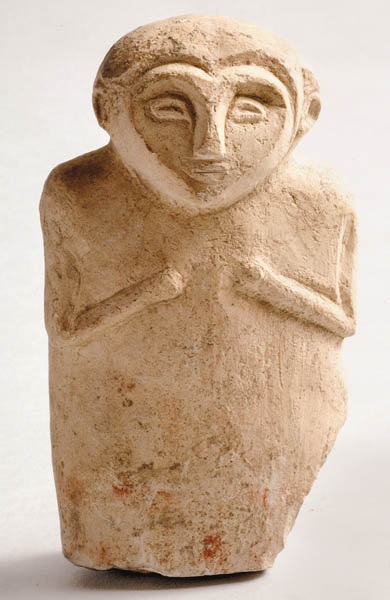Image Details

Photo: Courtesy of Claude Doumet-Serhal
HYBRID HUMAN-RAM DEITY. This painted limestone figurine possesses human features as well as the eyebrows, nose and horns of a ram. Dated around 1650 B.C.E., the standing figurine with broken legs represents a deity. Horns, widely found in a variety of contexts throughout the ancient Near East, are usually assumed to represent divine power. During the third and second millennia B.C.E. at Sidon, there was a hesitancy to depict the human face. This reluctance was characteristic of some early societies and was probably linked to a sacral fear of portraying human beings. When humans are pictured during these periods, they usually have both human and animal features. It is not known whether there was a taboo on the depiction of a full human likeness or whether combining human and animal forms on some of the faces to make a novel creature was the original intention all along.
